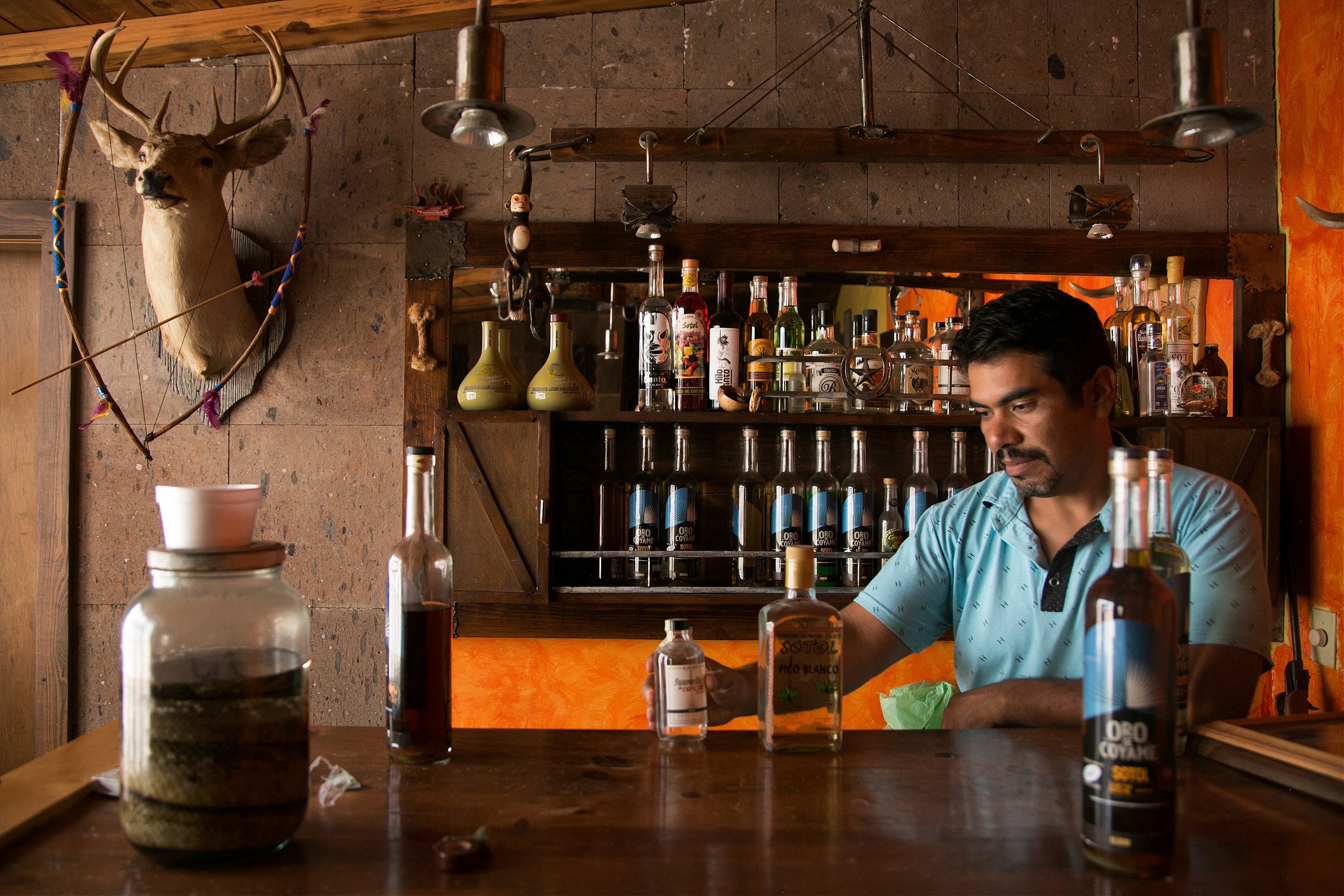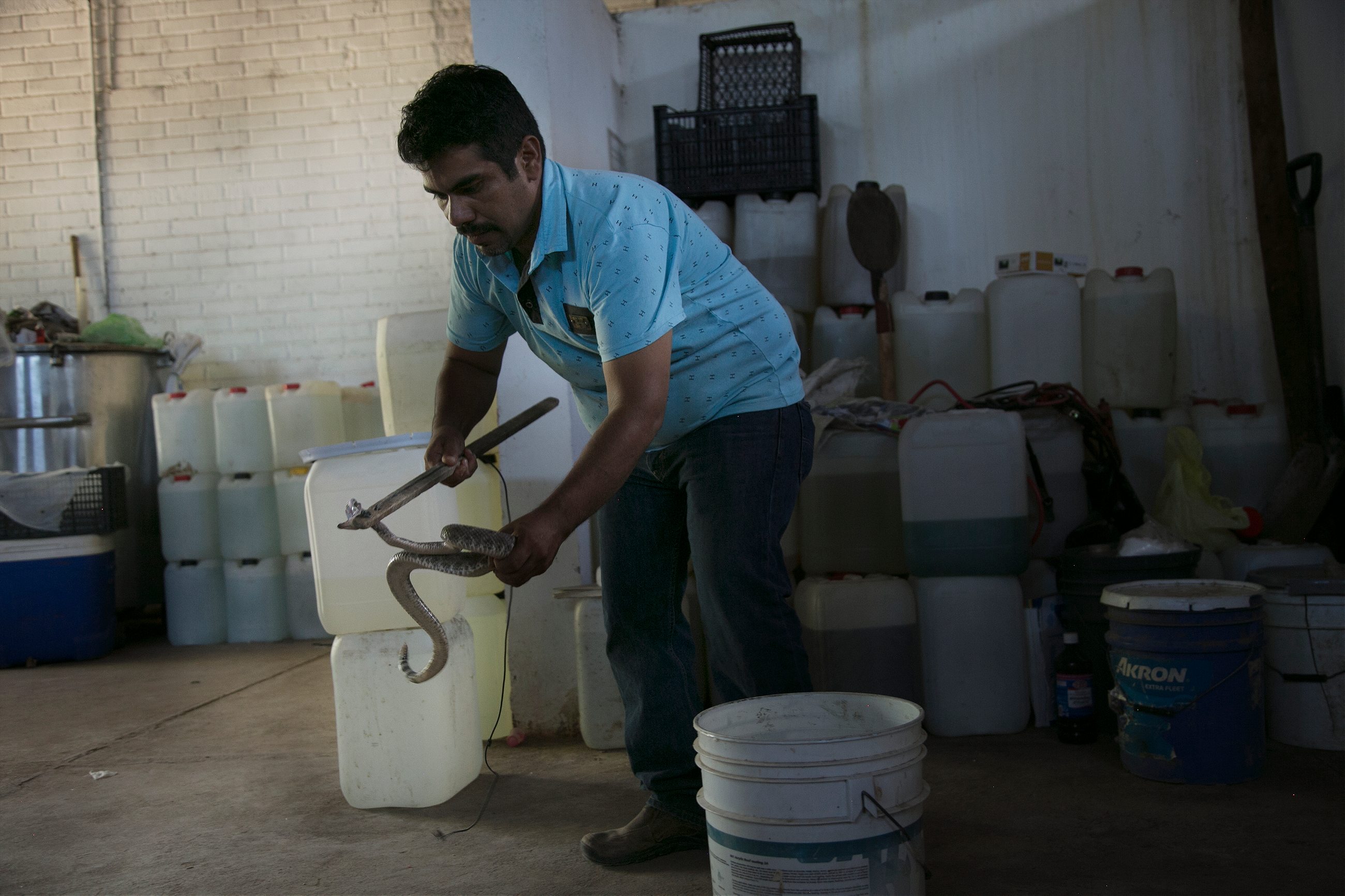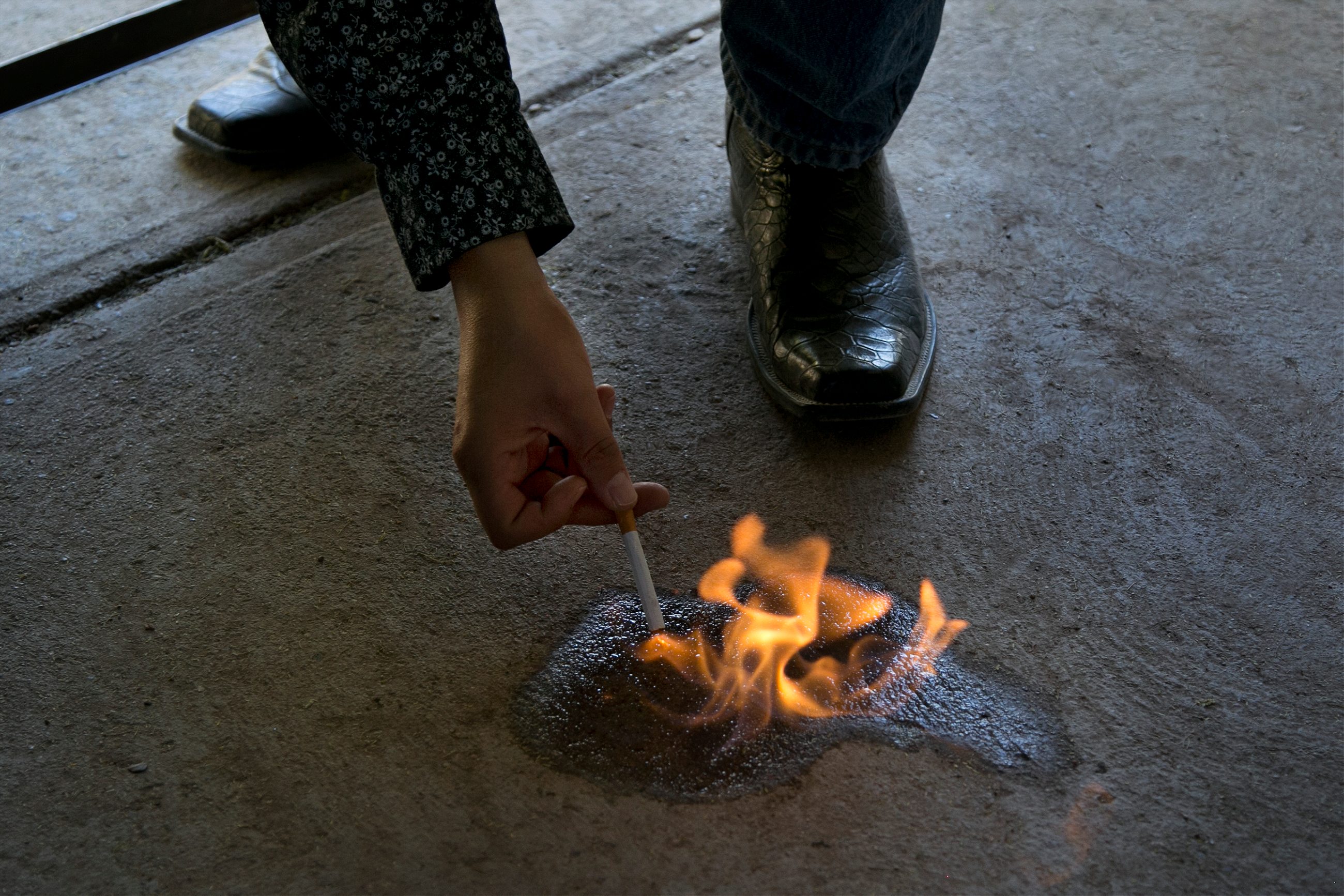Sotol is ready for its close-up.
I am lost in Juan Aldama, a small town where fine dust blows through sun-scorched streets in Mexico’s northern state of Chihuahua. Fortunately, an old woman eventually takes pity on me as I walk in circles. When I ask for the maestro sotolero, she leads me around the corner to Gerardo Ruelas’ house.
We walk through an unmarked door, past a bar with a tiny deer head on the wall, and into the kitchen. There I find Ruelas, who pours me a cup of Nescafé and begins describing sotol, the liquor that has brought me to his door. But as I struggle to understand his rapid-fire mumble of Spanish, he decides that coffee is not up to the task of easing our conversation, and pours me some of the spirit itself, a blend Ruelas has named “Elixir.”
The drink is dank on the nose and definitely herbal, but it goes down gently, a little sweet, friendlier than most aperitifs but somehow with more of an alcoholic punch. The most prominent flavor additives: marijuana and peyote.
How can that possibly be legal, I ask Ruelas. He shrugs, saying it is tradition. I silently hope that neither of those ingredients share more than their flavor with the drink.
In the last couple of years, if you’ve been to a bar where beards and mixology dominate, then you’ve likely run across mezcal pitched as the rough, Oaxacan craft cousin of tequila. Sotol, then, is the smoother brother that’s still flying under the radar in northern Mexico.
Ruelas is one of the few heritage sotoleros in Chihuahua, carrying on a tradition going back three generations in his family. He makes a range of sotols, from anejo—aged—versions to cremas de sotol, which are flavored like walnuts and could easily serve as a substitute for Bailey’s Irish Cream.

Sotol’s history is as long as it is rich, tracing its lineage back hundreds of years to Mayan agave beer. When the Spanish introduced liquor stills to Mexico, farmers started upping the proof of their offerings. In the south, those who harvested the country’s nearly 200 species of agave made mezcal. Tequila splintered off as the region around the eponymous town of Tequila built a reputation for a distinct style of the spirit made only from blue agave.
In the north, meanwhile, near the U.S. border, the sotol plant, known informally as the desert spoon, was harvested to create a unique spirit that was popular during U.S. Prohibition. After legal alcohol production returned stateside, however, sotol’s popularity dropped off. Now, tequila exports total more than a whopping 100 million liters per year, while mezcaleros send about one million liters abroad. Sotol sales, on the other hand, are on the order of a few tens of thousands of liters per year, and so it has tended to stay on back roads and in village kitchens.
While we ate breakfast with Reulas’ kids, a neighbor walked in to gossip and drink. Ruelas’ middle-school aged son filled a water glass full of Elixir, eliciting only mild protest from the neighbor before he settled into the cup of 96-proof alcohol.
Blindness is not an unreasonable concern when drinking moonshine
“Lots of people, when you offer them sotol, they say, ‘No, I’ll go blind. It’s for ranchers,’” says Armando Marin, an architect who opened a sotol bar, La Sotoleria, in 2014 in Chihuahua City as a sort of cultural heritage center.
Blindness is not an unreasonable concern when drinking moonshine: methanol poisoning from poorly processed liquor is no joke, and you should definitely know your distiller (and let them drink their hooch first). The sotol at the bar, however, is established enough that, like top-shelf booze around the world, it’s entirely safe … in moderation.
La Sotoloria is tucked into an alley full of chic clubs. Just around the corner, the 18th-century Catedral Metropolitana de Chihuahua dominates the historic city center, where old couples dance into the evening. Shops spread out in all directions, watched over by a colorful mural of a Pop Art Chihuahua dog. In the bar, bottles, lit from below by multicolored lights, sparkle on the walls.
Marin gets a lot of tourists looking for an authentic if comfortably familiar experience, but also draws in some Chihuahueños curious about their grandparents’ liquor. Most of what’s on Marin’s menu is not traditional—hamburgers and mojitos both made with sotol, for instance—but he’s making an effort to educate his clients about the traditional spirit. Sotol facts are scattered on the ceiling between abstract paintings.
“We are so Americanized with our drinks, drinking Budweiser and whatever,” interjects a waiter, inexplicably dressed in a red bathrobe and oversized sunglasses. Many city dwellers stick to the international standards: Johnnie Walker and cheap beer.
“I think it’s probably a tiny impact, but we put more people in touch with sotol,” says Marin. He carries a variety of liquors but features Ruela’s prominently.
The waiter, whom I now notice is wearing bath slippers to match his robe, sets a tasting flight in front of me with six shots of sotol in as many earth-tone shades. “If you want to shoot it, as you like, but I don’t suggest it,” he says, flip-flopping back to the bar.
I opt to sip through the range. The anejo is lightly fruity and finished with sweet smoke. A version blended with almond is rich with cinnamon and tropical flavors. Another blended with walnut flavoring is cloyingly sweet.

Later that afternoon, as I begin sobering up, Enrique Elias pours me a paper cup full of his clear reposado sotol—silky, rich, and smooth, “like wet earth after it rains,” he says—as we sit in the back of a Starbucks. Elias is dressed immaculately in a light, blue-gray blazer and white shirt, and talks excitedly about his family’s Sotol Hacienda de Chihuahua.
Sotol plants, he explains, take 15 years to mature, compared to the 8-10 that it takes for tequila’s blue agave to be ready to harvest. On the surface, this sounds like a disadvantage, but Elias argues that the extra time in the ground gives sotol more richness and complexity, which ultimately gives his spirit the advantage in the premium market.
The Hacienda is the largest producer of sotol in Mexico and is chasing the global market. “In America, they’re open to a new agave experience,” explains Elias. They therefore target the U.S. market, and also sell around Europe, China, Chile, and Canada.
Unlike La Sotoleria, Elias’ sell does not draw heavily on tradition. His company is built on the work of a distiller who once made brandy for Martell, and he prefers to compare his sotol to other spirits that you’d drink with a cigar. In the middle of a sentence, Elias flips up his phone to call an assistant to bring in a bottle of their newest “Platinum” sotol.
Sipping happily, I note the flavor of roasting marshmallows with a floral smell and a hint of cinnamon.
“It’s like incorporating a very natural plant with a very high-end, pure process,” he explains, leaning in. “Sotol—Johnny Depp actually came up with this—makes you eloquent.”

A few weeks later, driving back through Chihuahua, Elias invites me to the smoking room at one of his favorite private clubs. His wife is giving birth to their 12th child in El Paso and we share a cigar with a snifter of his “Plata” on the side. Relaxing into leather chairs, we talk about Donald Trump’s election with an elderly man and a Pemex executive who spends an hour telling us how his company is casually hacking personal information from just about anyone they please in Mexico.
The scene is a little different as I pass back by Gerrardo Ruelas’ house in Juan Aldama. As he refills my cup with his reposado and passes me a Styrofoam container of tacos from a stand around the corner, he describes the recent small-batch mezcal market boom and how he’s invested in a couple of mezcal labels. He’s hoping his Oro de Coyame sotol can follow that trend as drinkers look for the next new thing.
We load into his truck and drive to the palenque where all of his sotol is roasted in a pit, ground by a mule pulling a stone in a circle, and distilled in copper.
There is a chain on the gate, the result of a property dispute with a neighbor, and so Ruelas calls the police and we hop the fence. While we wait, I taste the lineup of young and aged sotols, then the sweet cremas de sotol.

In the corner of the distillery, there is collection of gently vibrating buckets. Ruelas pulls out a snake from one to milk it. Apparently, sotol aged with snake flesh and venom is also traditional. Tasting notes: strong overtones of rotting meat.
When the police finish cutting their way through Oro de Coyame’s gate, they unload from a squad of pickups with beers in hand. Everything I’d ever heard about Mexican police tells me I should be worried, but one of them, Ismael, saunters over and cracks open a bottle for me. He has just had a baby and is celebrating harder than he is working. He pulls out his phone and tours the distillery; as a result, there is now a Facebook live video of me with a very jovial police officer floating around the internet.
“This is the best sotol in the world,” declares Ismael. He proceeds to light some of Ruelas’ liquor on fire, using the flame to light a cigarette. This is clearly high-proof stuff.

Ruelas pours some into a shot glass made of horn. Bubbles pearl at the top, showing high alcohol levels that he estimates at 52 percent ABV. Then Ruelas dips a graduated cylinder in a giant basin of sotol and proves himself right: a precise 52 percent.
Ruelas fills a gallon jug and pays the police in sotol.
As the police pull out on the dusty road, another truck drives in, neighbors looking for some good medicine. Ruelas happily doles some out. Though he’s working to sell his nicely branded sotol in bars and restaurants, plenty of his business still stops by for a sip.
“The future is definitely artisanal,” Ruelas says.